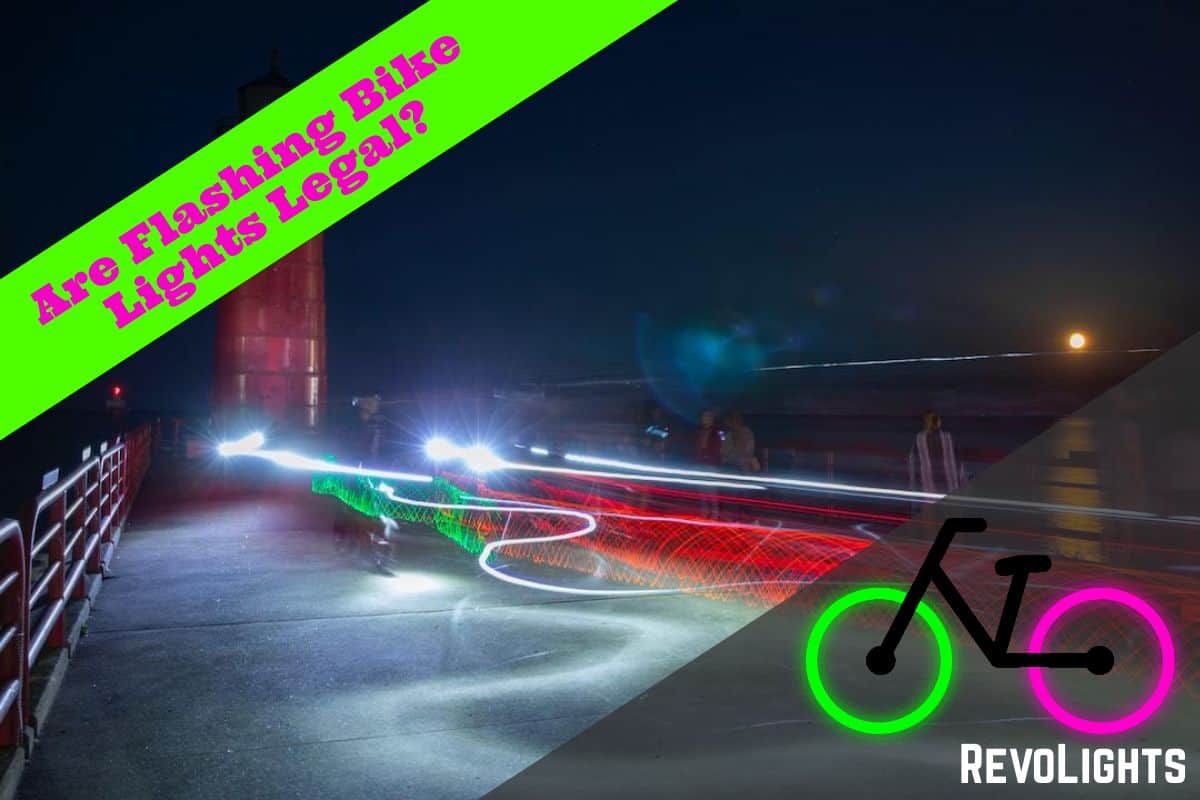Are you wondering if it’s legal to flash your bicycle lights while riding on the road? The answer is complex. It depends on the flash speed. A single, quick light flash is a courtesy signal to let other road users know you are there. If it flashes repeatedly or leaves the light on for too long, it’s a traffic violation. No matter the law, having a flashing light on your bike can help keep you safer. Although bicycle trips account for no more than 1% of trips in the U.S., over 2% of people who die in a crash are bicyclists—so it’s essential to take extra care when riding.

What is a Flashing Bike Light?
A flashing bike light is a blinking light attached to a bicycle. Batteries usually power in the morning, which helps the rider see in the dark and makes the rider more visible to other people on the road.
There are two types of flashing bike lights: steady and pulsing. Continuous lights emit constant light, while pulsing lights turn on and off at regular intervals.
The rate of the flashing light is essential. You can use a light that flashes between 60 and 240 times a minute. A quick flash of light is safe for everyone on the road.
Other factors include:
- Color: You can use nearly any color light, but white is the most visible.
- Position: Attach the light to the front and rear of your bike. You can also put lights on your pedals, wheels, or clothing.
- reflectors: You must have a reflector on the front and rear of your bike. You can also put reflectors on your pedals, wheels, or clothing.
Some requirements may vary depending on your specific location.
Do I Need a Flashing Bike Light?
No federal law in the United States requires cyclists to have a light on their bikes. However, many states and municipalities have laws that require riders to have lights on their bikes when riding at night. No matter the law, having a light is a good idea if you’re riding your bike at night.
Some states require that bikes have both a front and rear light. In other states, only a back light is needed. And in some states, no lights are required at all.
There are three main reasons you should have a light on your bike, even if it’s not required by law:
1. It Helps You See in the Dark
More than half of all bicycle accidents happen at night. A light will help you see where you’re going and avoid obstacles.
2. It Helps Others See You
A flashing light makes you more visible to other people on the road, including drivers, pedestrians, and
3. It’s the Law in Many Places
As mentioned, many states and municipalities have laws that require cyclists to have lights on their bikes when riding at night. Some states require a front and rear light, while others only require a back light.
The law on flashing bike lights
No federal law in the United States governs the use of flashing bike lights. However, some states have laws prohibiting using any kind of light on a bicycle while riding on the road. The laws vary from state to state, so it’s essential to check them in your location.
Most consider a quick flash of light a courtesy signal to let other road users know you are there. If it flashes repeatedly or leaves the light on for too long, it’s a traffic violation.
You should avoid using a light that:
- Flashes over 60 times per minute
- Is red or blue
- Is on the front of the bike
- Leaves the light on for over 5 seconds at a time
« Where to Put Lights on a Bike
Revolights: Shark Tank Appearance on Season 4 Episode 21 »
Different bike lights are available. You can choose between a steady or flashing light. A steady light emits a constant light, while a flashing light turns on and off at regular intervals.
How to Use Flashing Bike Lights
There are two ways to use flashing bike lights: as a courtesy signal and as a required light.
As a courtesy signal, you can use any color light. The light should be positioned on the front or rear of the bike. You can also put the light on your pedals, wheels, or clothing.
As a required light, the light must be white. The light should be positioned on the front and rear of the bike. You can also put the light on your pedals, wheels, or clothing. Don’t overdo it with the lights, though. You don’t want to blind other road users with too much light.
Do You Need a Flashing Bike Light in Urban Areas?
According to the CDC, most bicyclist deaths occur in urban neighborhoods. These areas have more lighting than suburban or rural areas, but the flashing light is still a good idea. It makes you more visible to other road users.
How Bright Should a Flashing Bike Light Be?
There is no standard for how bright a flashing bike light should be. However, the light should be bright enough to be seen by other road users. However, it shouldn’t be so bright that it blinds other people. Find a bright light to be seen but not so bright that it’s a nuisance.
Can You Use a Flashing Light During the Day?
Are flashing bike lights legal during the day? The short answer is yes. You can use a flashing light during the day. However, some states have laws prohibiting the use of lights on bicycles during the daytime in some areas.
It’s a good idea to use light during the day, even if it’s not required by law. Choose a light that is visible during the day and night. For the best results, use a light specifically designed to be used during the day. Stay safe riding during the day and night with a flashing bike light!




